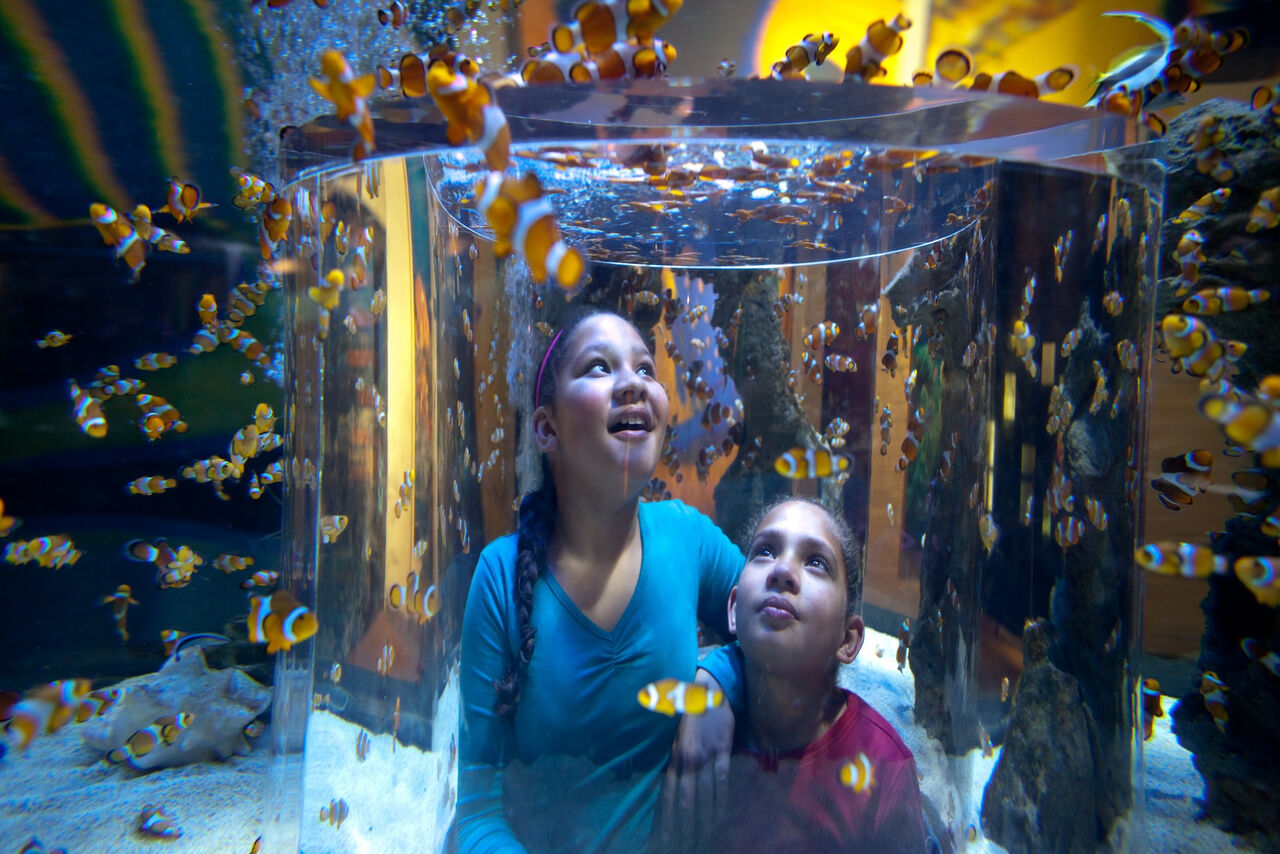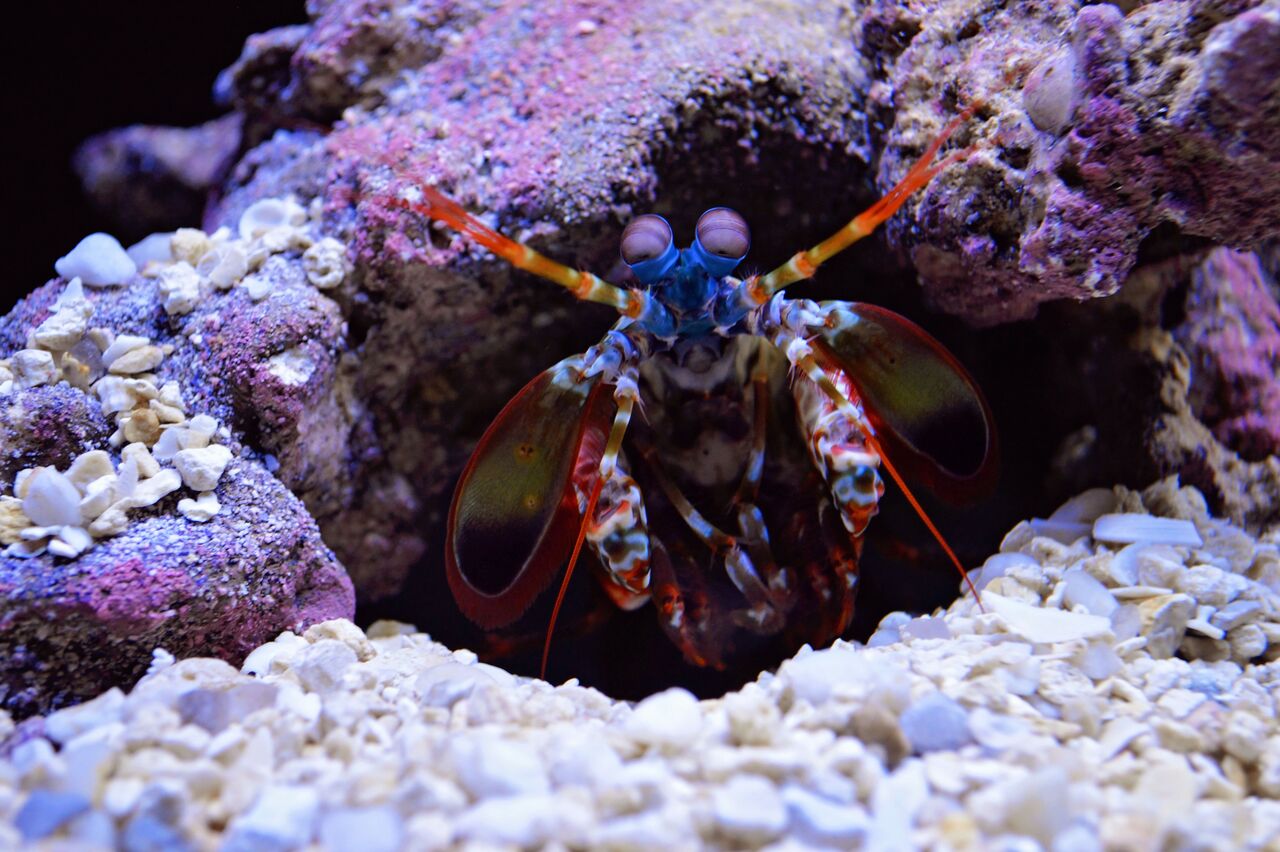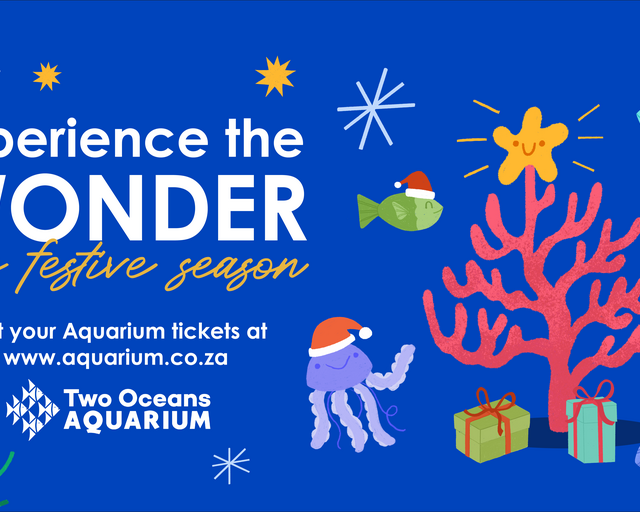The Two Oceans Aquarium is bursting with marine life just waiting to be explored! This holiday, check out 10 fishy friends who you can find and learn more about!
1. Common octopus
The common octopus may be tricky to find – after all, it is a master of camouflage!
There are around 300 species of octopus, and they are found in every ocean, most living on the seafloor but some drifting nearer to the surface. In South Africa, the most common octopus is… the common octopus or Octopus vulgaris.
The octopus is renowned for its rapid colour changes. It can adapt its body colour to match that of the surrounding environment within seconds. Our common octopus is housed in the Diversity Gallery – be sure to check it out.
2. Knysna seahorse
Seahorses are one of the weirder animals you can see at the Two Oceans Aquarium. With their horse-like heads, rounded stomachs, and curved tails, they are quite a bizarre sight!
Knysna seahorses are endemic to the Knysna, Keurbooms, and Swartvlei estuaries. This means that they are found nowhere else in the world! Of the five species of seahorse in South Africa, the Knysna seahorse is the only one that is endangered.
These quirky creatures, with their minuscule fins on their backs beating like wings, are a marvel to watch in the Diversity Gallery.
3. Sea fan
Sea fans are delicate-looking and truly beautiful!
These animals (yes, animals!) are made up of polyps that grow together in a flat, fanlike pattern. In sea fan colonies, each polyp has eight tentacles, and they spread these out to form a net for catching plankton. An internal skeleton, composed of a scleroprotein called gorgonin, supports the branches while the polyps form a layer over the entire surface. This results in a fan-like appearance!
You can find our sea fans in the Diversity Gallerybehind the nemo exhibit!
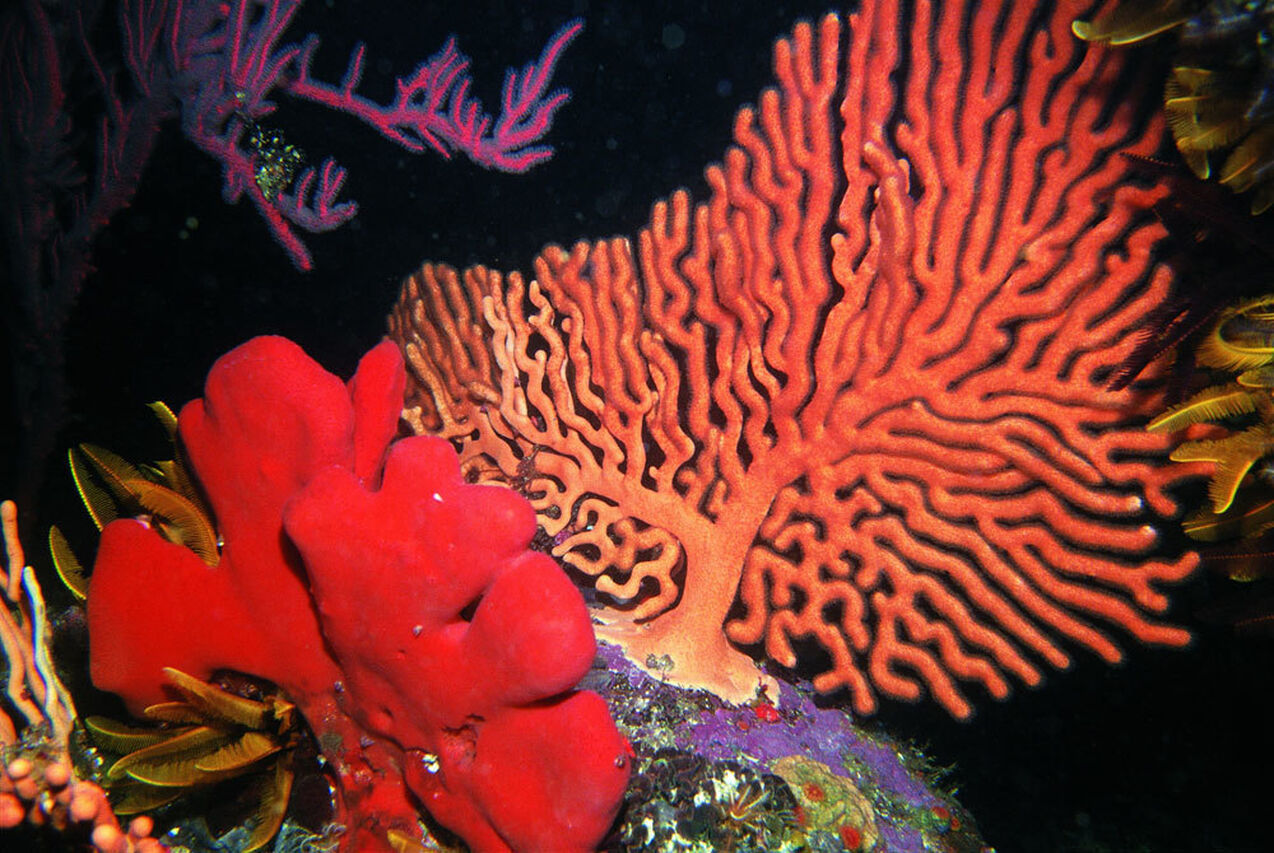
4. West Coast rock lobster
West Coast rock lobsters are locally known as “kreef” or crayfish!
These tough-looking lobsters are endemic to the western coast of South Africa, from Algoa Bay in the Eastern Cape around the Cape of Good Hope in the Western Cape to Cape Cross in Namibia. This means that nowhere else in the world can you see this kind of lobster!
West Coast rock lobsters are fascinating to watch – come check them out in the Diversity Gallery!
5. Geometric moray eel
Moray eels are the most fascinating animals that come in all kinds of patterns!
Geometric moray eels are named for the unique markings around their faces. These black dots and dashes are actually pores which can detect changes in pressure and help the eel to sense nearby prey or predators! Geometric eels are found on coral reefs in the Red Sea and the Western Indian Ocean, south of the Eastern Cape.
6. Mantis shrimp
The mantis shrimp has one of the most flamboyant appearances of all the animals in the Two Oceans Aquarium!
Although there are around 450 species of mantis shrimp, they are all very distinct in colouration. Peacock mantis shrimps (like the one at the Aquarium) are arguably the most colourful of all, with luminescent purple eyes, bright orange limbs, and striped bodies.
Spot the mantis shrimp in the Diversity Gallery– you won’t be able to look away!
7. Dwarf pufferfish
In our opinion, the dwarf pufferfish (Torquigener flavimaculosus) is one of the cutest pufferfish species... It has a pretty, spotted pattern of brown, yellow, and white markings joined by a line on the rear body. With a brownish-green ring around the iris of the eye, this is a face you won’t forget!
Look carefully at the sandy floor of the Dwarf Pufferfish Exhibit – these quirky little fish often sleep during the day by burying themselves in the sand with just their eyes exposed! This is an excellent way to avoid predation, as their colouration helps them to camouflage perfectly with the sand.
8. Honeycomb stingray
Known fondly as Honey, our honeycomb stingray is a striking and iconic resident of our I&J Ocean Exhibit.
This stingray mostly rests on the sandy bottom of lagoons and shallow waters. So, in the wild, their beautiful pattern helps to camouflage them from sharks and other predators that may try to hunt them from above. Fully grown, a honeycomb stingray can be 6m long, 2m wide, and weigh over 120kg!
Come visit Honey in the I&J Ocean Exhibit– you may have to keep an eye out on the sandy seafloor to find her!
9. Devil firefish
The devil firefish is a strikingly beautiful part of our Aquarium family! It occurs naturally throughout the Indian Ocean, ranging from South Africa to the Red Sea and the coast of southern Asia to India and Indonesia.
Their infamously venomous spines serve as protection, making it difficult for predators to eat the devil firefish. The toxins are a very strong deterrent and can cause severe illness and even death to large animals, even humans, that are stung. That said, the devil firefish is non-aggressive, so incidents like this are rare, with firefish preferring to simply hide and wait for darkness before swimming about.
You can find our devil firefish just after the I&J Ocean Exhibit's majestic underwater tunnel!
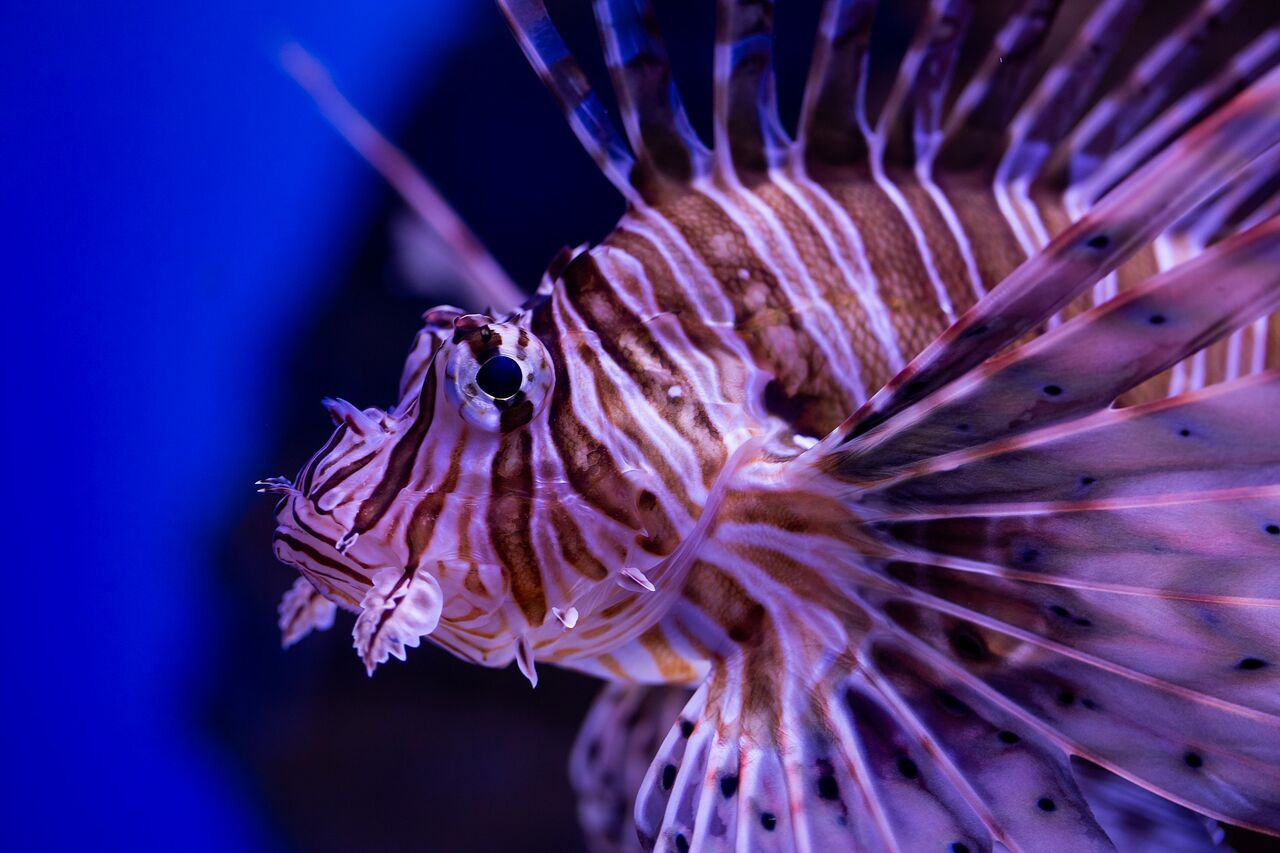
10. Feather-duster anemone
The feather-duster anemone originally hitchhiked to South Africa from the cold waters of the North Atlantic Ocean on the hulls of ships! The species was first reported in the docks of Table Bay in 1996 and has recently been sighted on deeper reefs of the Agulhas Bank MPA.
The feather-duster anemone appears in various forms (usually white, orange, or dark green) with a wider base than the column. At the top of their columns, they have short, feather-duster-like tentacles (hence the name) which they use to catch and feed on the larvae of worms, molluscs, and barnacles.
Check out our feather-duster anemone in the Diversity Gallery!
Related News
Sign up to our Newsletter
Receive monthly news, online courses and conservation programmes.
